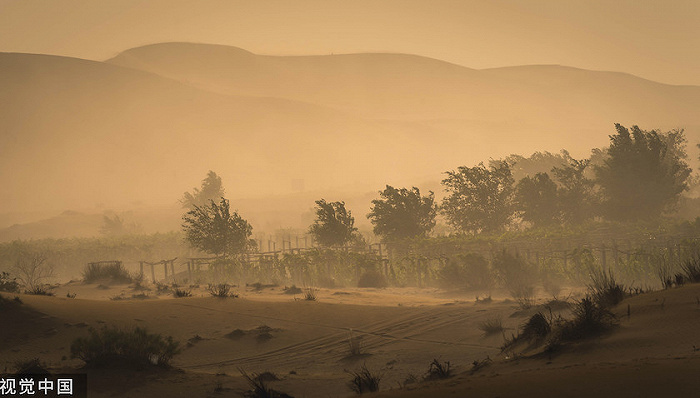From April 9 to 11, a large-scale dusty weather occurred in northern China. According to the Central Meteorological Observatory, the dusty weather originated in southern Mongolia. It is estimated that within two months, there will be less precipitation in the sand source area from southern Inner Mongolia to central and western Inner Mongolia, and the temperature will be higher than normal, and it will be favorable for the formation of sandstorm weather due to the phased southward movement of Mongolian cyclone.

Generally speaking, there are three main factors affecting sandstorm weather: cyclone activity, vegetation coverage and soil moisture. Spring is the peak of cyclone activity in Mongolia, and its movement process will have an important impact on the weather in northern China (especially dust or sandstorm weather).
In recent years, the positive feedback cycle between soil moisture deficiency and surface warming has led to a hotter and drier climate in this area, which is more likely to become a new sand source.
Mongolia covers an area of about 1.56 million square kilometers, nearly one sixth of that of China, but its population is only over 3 million. The climate of this country is a typical continental temperate grassland climate, with frequent snowstorms and dusty weather in spring. Research shows that this landlocked country is experiencing a vicious cycle of high temperature, heat wave and drought under the background of climate change. Mongolia is constantly affected by high temperature, drought and unsustainable economic development mode, which reflects the situation in many fragile climate areas in the world.
In November 2020, the article “East Asia suddenly turned to a hotter and drier climate after exceeding the critical point” in Science magazine pointed out that the Mongolian Plateau may soon become as barren as some areas in the southwestern United States, and the “vicious circle” of heat waves aggravated the drying of soil.
The researchers found that the record high temperature in this area led to the rapid decline of soil water content, and soil moisture could not alleviate the abnormal high temperature. Chen Deliang, co-author of the paper from the University of Gothenburg in Sweden, said, “More heat waves mean more soil water loss, and then it will continue to lead to more heat waves.”
Before this study, the lakes in the Mongolian Plateau had experienced a rapid decline. By 2014, researchers in China found that the number of lakes with an area of more than 1 square kilometer in Mongolia decreased by 26%.
Daniel Griffin, from the Department of Geography, Environment and Society of the University of Minnesota, USA, did not participate in the study. He commented on the study, saying that he was more worried about the extreme events that may occur in the future after he realized the “normal” climate change process.
“How serious can these events be?” Griffin asked. “If the’ new normal’ means extreme heat and dryness by historical standards, the extreme weather in the future is likely to be different from anything we have witnessed before.”
At one time, 80% of Mongolia’s territory was covered by grasslands, but at present, about 70% of the grasslands have been destroyed. Mining and climate change are considered as one of the destructive factors, but the main reason for grassland degradation is overgrazing.
Behind overgrazing is the consideration of economic interests: Mongolia is the second largest cashmere producer in the world, and its cashmere supply accounts for about one-third of the world. Cashmere is also Mongolia’s third largest export commodity besides copper and gold.
According to the statistics of the International Monetary Fund (IMF), from 1990 to 2020, the number of livestock in Mongolia tripled, far exceeding the capacity of grassland.
According to the IMF report, animal husbandry accounts for 90% of Mongolia’s agricultural production, and a quarter of Mongolians are engaged in animal husbandry. However, serious overgrazing and climate change have aggravated grassland degradation in the country, which in turn has further led to feed shortage.
A study by Oregon State University in 2013 also showed that 80% of grassland degradation in Mongolia was caused by overgrazing.